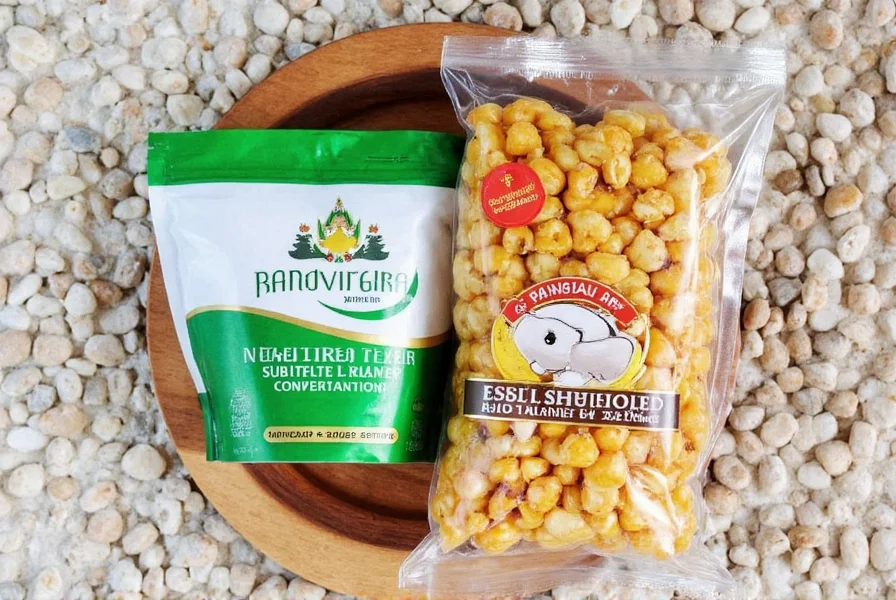Top 5 Galangal Substitutes for Thai Curry & More
When you can't find galangal for Thai curry, tom kha gai, or other Southeast Asian dishes, these 5 proven substitutes will preserve flavor and authenticity. Based on chef-tested alternatives and flavor analysis, here's exactly how to replace galangal in your recipes:
| Substitute | Flavor Similarity | Best Use Case | How to Use |
|---|---|---|---|
| Ginger + Lemon Zest | High (85%) | Thai curries, soups, stir-fries | Use 3/4 ginger + 1/4 tsp lime zest per tbsp galangal. Add zest at the end of cooking. |
| Coriander Root | Very High (95%) | Authentic Thai pastes, tom yum | Grate fresh roots. Use equal amount. Essential for street-food authenticity. |
| Prao (Wild Turmeric) | High (80%) | Green mango salad, Isaan dishes | Grind into paste. Use 75% of galangal quantity. Avoid powdered form. |
| Ginger + Turmeric | Medium (65%) | General cooking, health-focused dishes | 1:1 ginger-turmeric ratio. Add black pepper for absorption. |
| Cardamom + Ginger | Low-Medium (50%) | Desserts, chai, rice dishes | 1 part cardamom + 2 parts ginger. Use sparingly. |
When & Why You'd Need a Galangal Substitute
Galangal is irreplaceable in authentic Southeast Asian cooking, but these situations make substitutes necessary:
- Missing fresh galangal while cooking Thai curry or tom kha gai
- Living in regions without Asian grocery stores
- Need quick pantry alternatives for last-minute meals
- Restricting specific ingredients for dietary reasons
1. Ginger + Lemon Zest: The Reliable Stand-In

Ginger provides the foundational warmth, while lemon zest replicates galangal's signature citrus notes. This combination works best for Thai curries where galangal's sharpness is needed.
Pro Tip: For every tablespoon of galangal, use 3/4 tbsp grated ginger + 1/4 tsp fresh lemon zest. Add zest in the final 2 minutes of cooking to preserve its volatile oils.
2. Coriander Root: Authentic Thai Flavor

Used by Thai street vendors, coriander root delivers the closest flavor match. Its pungent, herbal profile is essential for authentic tom yum and red curry paste.
Pro Tip: Clean roots thoroughly. Grate or blend into paste. Use equal quantity to galangal. Store unused roots wrapped in damp cloth in fridge for 1 week.
3. Prao (Wild Turmeric): Regional Alternative

Common in Northern Thai cuisine, Prao offers peppery bitterness similar to galangal. Ideal for som tam (green papaya salad) and Isaan-style dishes.
Pro Tip: Always use fresh Prao. Slice thinly and pound into paste. Powdered versions lack authentic flavor. Use 75% of galangal quantity.
Comparison Table: Galangal vs. Substitutes
| Spice | Flavor Profile | Boldness | Best Use Case | Availability |
|---|---|---|---|---|
| Galangal | Citrusy, piney, peppery | Strong | Thai soups, curries, marinades | Low (specialty stores) |
| Ginger + Lemon Zest | Warm, zesty, citrus-forward | Moderate | General Asian cooking | High |
| Coriander Root | Pungent, herbal, earthy | Strong | Authentic Thai pastes | Medium |
| Prao | Peppery, bitter, aromatic | Strong | Isaan-style salads | Low |
| Ginger + Turmeric | Earthy, golden, mild | Mild | Health-focused dishes | High |
Pro Tips for Using Galangal Substitutes
- Layer flavors: Combine ginger (warmth) + coriander root (pungency) + lime zest (citrus) for 90% galangal authenticity
- Timing matters: Add ginger early for base flavor, citrus zest last for brightness
- Texture matters: Always grate fresh roots instead of using powder for better integration
- Test small batches: Start with 75% substitute quantity and adjust to taste
- Save galangal for special dishes: Reserve fresh galangal for recipes where it's irreplaceable (e.g., Thai green curry paste)

Frequently Asked Questions About Galangal Substitutes
- What's the best substitute for galangal in Thai curry?
- For authentic Thai curry, use coriander root (95% flavor match) or ginger + lemon zest (85% match). For quick pantry solutions, combine 3/4 ginger + 1/4 tsp lime zest per tbsp galangal. Avoid turmeric alone as it lacks the necessary spice profile.
- Can I use ginger instead of galangal?
- Yes, but ginger alone is insufficient. Use 75% ginger quantity and add 1/4 tsp fresh lemon zest per tbsp galangal. Ginger lacks galangal's citrus-pine notes, so the zest is essential for authenticity.
- Is galangal the same as ginger?
- No. Galangal has a sharper, citrusy-pine flavor with less heat than ginger. Visually, it's paler, harder, and smoother. They're not interchangeable in authentic recipes without adjustments.
- Where can I buy galangal?
- Find fresh galangal in Asian grocery stores (look near ginger and turmeric), specialty produce sections of Whole Foods, or online retailers like Amazon. Frozen galangal works well for curries. Avoid powdered galangal unless fresh is unavailable.
- How much ginger should I use instead of galangal?
- Use 3/4 the amount of ginger compared to galangal. For example: 1 tbsp galangal = 3/4 tbsp ginger + 1/4 tsp lemon zest. Always taste and adjust—ginger is more pungent and can overpower dishes if overused.
- Can I omit galangal from a recipe entirely?
- No. Galangal provides unique citrus-pine notes critical to Thai cuisine. Omitting it results in flat, unbalanced flavors. Always substitute with one of the recommended alternatives rather than skipping entirely.
Final Thoughts
While nothing replicates fresh galangal perfectly, these substitutes deliver remarkable flavor when used correctly. For Thai curry, prioritize coriander root or ginger-lemon zest combinations. Remember: the key to successful substitution is understanding what galangal brings to the dish (citrusy-pine notes) and finding alternatives that mimic those specific qualities. Next time you're missing galangal, grab one of these options and keep your Thai dishes authentic and delicious.












 浙公网安备
33010002000092号
浙公网安备
33010002000092号 浙B2-20120091-4
浙B2-20120091-4